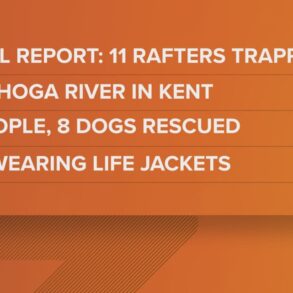
If you travel to Canada and take your dog along, be prepared to prove your furry friend has their rabies shots when returning to the U.S.
The Centers for Disease Control and Prevention (CDC) has outlined new rules for bringing dogs into the U.S., which will take effect Aug. 1. These regulations aim to prevent the spread of rabies and other diseases that can be transmitted from dogs to humans. The rules vary depending on whether the dog has been in a country with a high risk of rabies within the past six months.
For dogs coming from low-risk countries, like Canada, entry is relatively straightforward. Owners need to provide a Certification of U.S.-issued Rabies Vaccination form or a USDA-endorsed export health certificate that documents the dog’s age (at least six months) and microchip number.
In addition, the health certificate must state the dog is rabies-free and is returning from a low-risk or risk-free country or documents a valid, unexpired rabies vaccination administered in the U.S. The form is valid only for 30 days if it does not contain rabies vaccination information and for the duration of the rabies vaccination, which is one to three years.
For dogs that have been in high-risk countries, the process is more complex. The dogs must be at least six months old, appear healthy on arrival and have a valid rabies vaccination certificate. Dogs that arrive sick or injured will be required to undergo veterinary examination and testing at the dog owner’s expense to rule out diseases that can spread to people.
The CDC offers three options for bringing these dogs into the U.S.:
– Present a U.S.-issued rabies vaccination certificate.
– Obtain a CDC Dog Import Permit.
– Use a CDC-approved animal care facility.
Details of the options are on the CDC website and the American Veterinary Medical Association.
All documents must be in English or accompanied by a certified English translation.
While Canadians who bring their dogs across the border will also be required to follow the same rules as American visitors, Canadian Minister of Health Mark Holland said the new CDC regulations “risk negative impacts” to the Canadian people, supply chains and local economies.”
“These new CDC regulations will impact all dogs entering the U.S. from Canada and will require Canadians to take on additional planning and costs to satisfy the new requirements,” Holland said. “These regulations will also impact Americans returning with their dogs to the U.S. after visiting Canada.”
Holland said that rules will “disproportionately impact” people who require service dogs when they travel, as well as Indigenous people who frequently travel across the border to their traditional territories.
U.S. Sens. Susan Collins and Amy Klobuchar led a bipartisan group of 14 senators in sending a letter to CDC Director Dr. Mandy Cohen Thursday to extend the Aug. 1 date to “to give affected parties more time to comment on proposed changes and for the CDC to consider much-needed adjustments.”
They added that the CDC’s final rule would have “unintended, detrimental consequences.”
“The financial and regulatory burdens this new rule would place on U.S. and Canadian dog owners would undoubtedly restrict travel between the two countries,” the senators wrote. “The economies of the United States and Canada are highly intertwined in border areas. The new requirements for entry could affect participation in significant events held in our states, such as major sledding competitions, that contribute to our regional economies.
“Sled dogs are often transported through Canada to participate in races in various parts of the United States, and the new restrictions could make it more expensive and difficult to travel to these races,” the letter continued. “Sporting enthusiasts would also be prohibited from bringing puppies into the United States at the prime age to begin training, and Canadian breeders would be unable to release young puppies to American owners prior to vaccination, which would limit development of skills learned at a young age. Truck drivers who travel with their dogs while carrying goods into the U.S. could also face difficulties in meeting these regulations.”
Veterinary clinic staff we contacted in South Snohomish County said they were just learning about the regulations and so weren’t able to comment on them. Co-clinic Manager Hope Liddil of Maple Leaf Veterinary Care Center in north Seattle said that some of her clients are “concerned,” but she doesn’t think many people know about it yet.
“If you don’t have the proper documentation, your dog may be sent to one of a few airports in the States where it may be quarantined at the owner’s expense,” Liddil said. “Then you would need to travel to retrieve your dog.”
“The CDC is claiming that rabid dogs have been entering the U.S. from foreign countries via Canada and Mexico,” Liddil said. “But the real reason is unknown to us. [And] why only dogs? I can easily bring my cat and pet bat back into the country.”
— By Nick Ng
This post was originally published on this site be sure to check out more of their content.












































